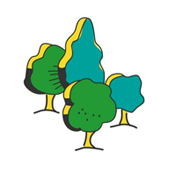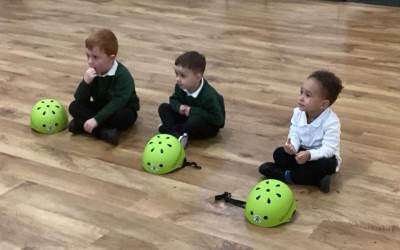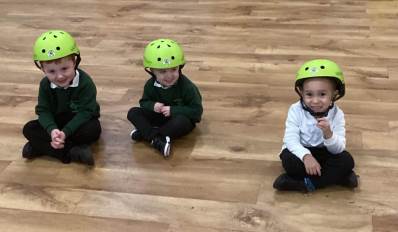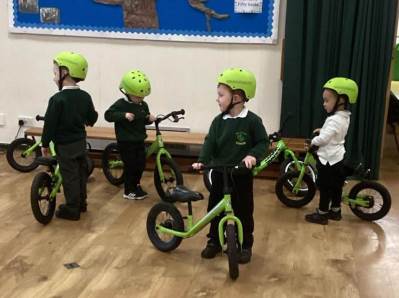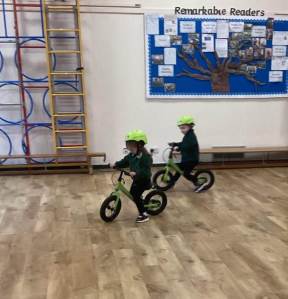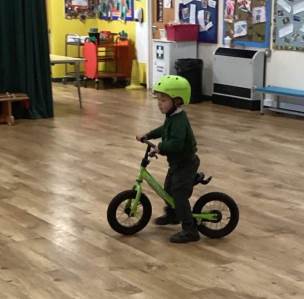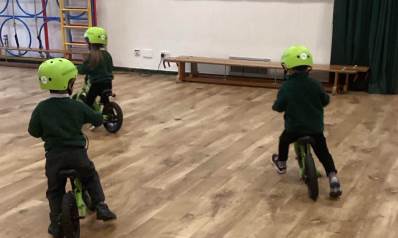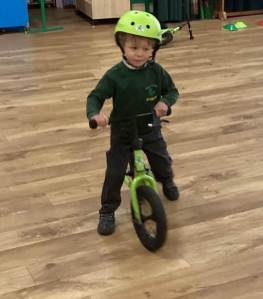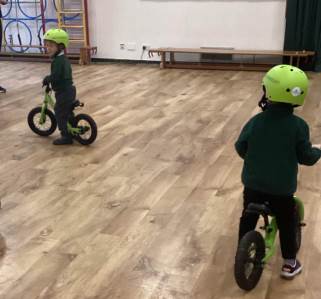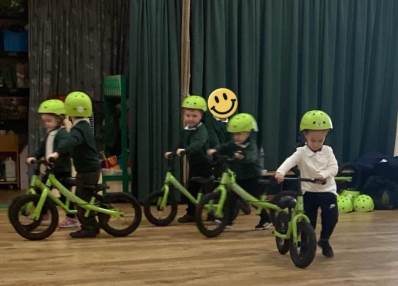{SECTION_MENU}
Nursery
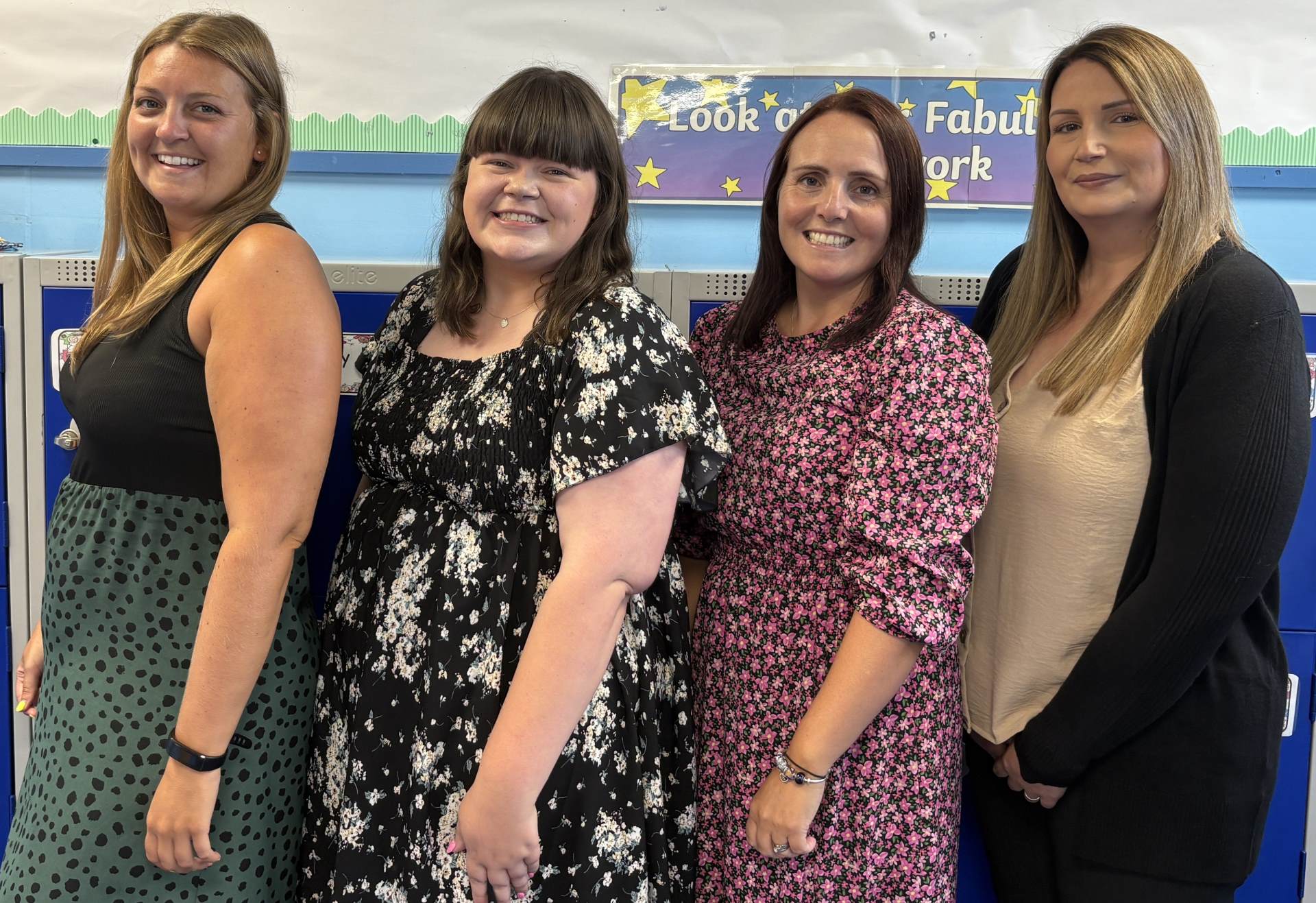
Nursery Teaching Staff
Miss Edwards -Nursery teacher
Mrs Southall -Nursery Teaching assistant
Mrs Hackett -Nursery Teaching assistant
Miss Marshall -EYFS Team Leader
Welcome
Welcome to Holly Grove's Nursery page! Here you will find all sorts of information about what the children in Nursery are up to and we will regularly update the page with pictures and information for you all.
Reminders
- Drop off and collection: Enter through the main gate and up to the nursery gate where a member of the early years team will be there to greet your child. The gate will open each morning at 8:40 am and will close at 8:50 am.
- 15-hour children: The gate will open at 11.40 am for collection.
- 30-hour children: The gate will open at 3.25 pm for collection from the nursery playground. Please be aware that Reception children will be exiting from the nursery playground at 3.20 pm everyday so you will not be able to collect your child until they have all gone or 3.25 pm whichever is the earliest. Please can we ask you wait to one side to allow for the reception children to be released.
- Spare clothes - please put spare clothes/ a change of shoes in a separate sealed bag which can be left at nursery. If your child is likely to have frequent accidents, please put in several sets of clothes / underwear). Please make sure everything is labelled.
- PE Kit - White t-shirt with or without school logo, black or green shorts, trainers, black/ green jogging bottoms, black/ green jacket. Hair tied up and no earrings.
- Forest school- For outdoor learning sessions the children will need to come to school in their forest school clothing. This includes jogging bottoms/leggings, a long sleeve top, their school jumper. They will also need waterproof clothing and their wellington boots. They will need a spare change of clothing for after forest school.
- Book Change 'Fantastic Forty' is on a Monday.
Daily Check list:
- Coat
- Jumper or cardigan
- Water bottle
- Bag
EYFS Parents Induction/Welcome Meeting for September 2025 Starters
eyfs induction evening 2025.pdf
EYFS Newsletters 25/26
eyfs autumn 1 25 newsletter.pdf
Nursery Timetable 25/26
Nursery Curriculum 25/26
In Nursery, we focus on the three prime areas of learning and teach the 4 specific areas through continuous provision. We always teach homing in on children's interests meaning our topics are never the same from year to year.
We follow the Early Years Curriculum, for more information please click here
https://www.gov.uk/early-years-foundation-stage
Lunch Menu
Nursery Forms
-
Holly Grove Nursery Payment Schedule 25 to 26
download_for_offline
↑
download_for_offlineHolly Grove Nursery Payment Schedule 25 to 26
- nursery-application-form 25 26 download_for_offline
download_for_offlinenursery-application-form 25 26
- Parent-Declaration-for-Early-Education-Funding download_for_offline
download_for_offlineParent-Declaration-for-Early-Education-Funding
- Terms and Conditions 2025 to 2026 download_for_offline
download_for_offlineTerms and Conditions 2025 to 2026
Class Dojo
Forest Schools
Autumn/winter
- Wellington boots
- Coat
- Old Warm clothing (tops, jumpers, trousers)
- Hat and gloves
- Waterproof coat/trousers if possible
- Change of clothes and shoes
Phonics and Early Years
Phonics
Children who start with us in Nursery just after their 3rd birthday take part in Lola the Listening Leopard activitiesLola the Listening Leopard
Lola teaches us how to sit and listen through games in readiness for us to start our Little Wandle phonics Journey . Lola is very popular with the children and they soon learn that she doesn't like loud noises.
Once we start our Little Wandle journey we always teach activities that develop children’s listening and attention skills.
Rhyme Time
Every week the children learn a nursery rhyme and build up their repertoire of songs. They then build on this by listening to sounds, making voice sounds, rhyming, odd one out and alliteration games.
Oral blending
Oral segmenting is the process of breaking down words into phonemes (the smallest units of sound). Oral blending is the process of saying these sounds then blending them together into a word. It helps children identify and hear phonemes in words and blend them together to read a word. It is important that children have plenty of experience of listening to adults modelling oral blending and joining in with oral blending activities before they are introduced to grapheme–phoneme correspondence. This ensures they are ‘tuned into’ sounds when they begin Phase 2. This is done in a short daily activity.
Remember, in Foundations for phonics we are focusing on just the phonemes. Just the sounds. You should not introduce grapheme cards at this stage.Tuning into sounds
To enable children to begin to distinguish the initial sound in words, they need exposure to a range of games that develop this. These opportunities should be short games that are age- appropriate to ensure children are engaged in them. Games that involve children’s names or animals, or are part of an alliterative story or poem, are good ways to develop this skill. The following games we play as part of our weekly provision:
• Play with sounds
• Bertha the bus goes to the zoo
• Name play
• Voice sounds
• What’s in the box?Early Reading
Sharing stories and poems
Research shows that children benefit from daily sharing of high-quality stories and poems from a young age: they learn language faster, enter school with a larger vocabulary and become more successful readers (Mol et al., 2008).
From the start of Nursery, children should have lots of opportunities to engage with books that fire their imagination and interest, as well as immerse them in language they would not otherwise be exposed to. They should also be provided with a range of high- quality books to choose and read (in their own words), as well as to share with an adult.
Children will benefit from reading both as part of a class or key group and also one-to-one with an adult.
Effective ways of sharing books and poems
Use a balance of reading styles. Research suggests that the most effective styles are:
dialogic – where the children are active participants in the reading (rather than just reading being read to) and where they are talking about and around the book (rather than just focusing on the text)
pause reading – where the practitioner pauses and encourages the children to talk (Colmar, 2014)
use of props or objects – particularly effective for children with low levels of language (Wasik and Bond, 2001)
use of elaborative reminiscing – where the practitioner and children relate events in the story to events in the children’s life (Reece et al., 2010).It is important that, over time, children have a balance of these styles of sharing a story, even though children with language impairments seem to benefit less from the dialogic style and more from the simpler styles of pause reading and use of props or objects (cf. Mol et al., 2008).
• Use high-quality books that provide children with a range of new vocabulary and develop a love of books and reading.
• Build anticipation – provide children with snippets of information about the book before you read.
• Share your passion and enthusiasm when reading – discuss your favourite books so that children can develop their own passions and enthusiasms.
• Read the book yourself, before reading it to the children, to ensure you can develop interest and draw out new and interesting vocabulary.
• Encourage the children to join in with repeated refrains (such as ‘Run, run, as fast as you can, you can’t catch me, I’m the gingerbread man’).
• Use different voices for different characters, to spark interest and imagination.
• Trigger the children’s curiosity and invite their participation by ‘wondering aloud’ (for
example, say: I wonder why that happened? I think that means...)
• Read stories over and over again. Hearing words repeated is crucial to children learning
new language.
• Select books that reflect the children you are sharing stories with.
Learning nursery rhymes and action rhymes
Singing a range of nursery rhymes and action rhymes must be part of the daily routine. Children need to experience a rich repertoire of nursery rhymes and action rhymes that include multi-sensory experiences, such as action rhymes in which children have to add claps, knee pats or foot stamps, or move in a particular way. They need to build a stock of rhymes through hearing them in different contexts.
To share nursery rhymes and action rhymes in an effective way:
• Use a wide range of nursery rhymes and action rhymes.
• Repeat these often, so that children learn the words and actions for themselves.
• Use actions and clapping.
• Use different voices and sound effects.Nursery Photo Gallery
Look at the fantastic activities we have done in Nursery
Nursery balance bikes
EYfS Diary Dates
-
12 Jun 202614:00 to 15:00
Adding dates to your calendar
Subscribing via Outlook
Follow the relevant instructions below, using the feed address http://www.hollygrove.greenhousecms.co.uk/ical.ics
- Outlook Office (desktop) (section: Add internet calendars)
- Outlook.com (section: Subscribe to a calendar)
- Outlook via a web browser (section: Subscribe to a calendar)
Subscribing via Google
- On your computer, open Google Calendar
- On the left, next to "Other calendars" click 'Add'
followed by 'From URL'.
- Click this button to copy the feed address to your clipboard and paste it into the 'URL of calendar' field
- Click 'Add calendar'. The calendar will appear on the left side under "Other calendars"
It might take up to 12 hours for changes to show in your Google Calendar.
Subscribing via iPhone
- Click this link and click 'Subscribe' in the popup message
- nursery-application-form 25 26 download_for_offline

